Transcranial Magnetic Stimulation (TMS)
Transcranial Magnetic Stimulation Defined
(TMS)
What Is Transcranial Magnetic Stimulation?
As a non-invasive procedure that uses magnetic fields to stimulate nerve cells in the brain, TMS is primarily used to treat depression, particularly when other treatments have not been effective. During a TMS session, an electromagnetic coil is placed against the scalp near the forehead. The electromagnet painlessly delivers a magnetic pulse that stimulates brain cells involved with functions like mood control and depression.
What Does TMS Treat?
TMS is primarily used to treat neurological conditions like treatment-resistant major depressive disorder (MDD) and obsessive-compulsive disorder (OCD), and to reduce the frequency of migraines with aura. It is under investigation for a number of other conditions such as stroke rehabilitation, Parkinson’s disease, and chronic pain.
TMS Mechanism of Action
TMS induces neural activity by creating a time-varying magnetic field, which generates an electrical field in the brain. This electric field can trigger activity in cortical neurons, which in turn triggers secondary activations which influence broader brain networks. It also stimulates peripheral nerves in the scalp, neck and ears, which affect sensory networks and potentially influence attention.
Interpreting physiological outcomes is a complex process, compounded by the fact that the pre-treatment functional state of the brain strongly influences the response. Research continues to seek a deeper understanding of its mechanisms.
Is TMS FDA Approved?
Transcranial Magnetic Stimulation (TMS) has been FDA-approved for several applications in a clinical setting, including:
Major Depressive Disorder: TMS received FDA approval in 2008 as a treatment for major depressive disorder for patients who have not responded adequately to antidepressant medications.
Obsessive-Compulsive Disorder (OCD): In 2018, the FDA approved TMS for the treatment of OCD, providing a new option for patients who do not respond well to traditional therapies.
Migraine: Specifically, a type of TMS device has been approved to treat migraine with aura. This device is used as a preventive treatment to reduce the frequency of migraine attacks.
Smoking Cessation: TMS has been approved to help adults quit smoking, particularly those who have not succeeded with traditional cessation methods.
Anxiety: As of more recent developments, TMS has also been approved for treating anxiety disorders, expanding its applications in the mental health field.
Can TMS Treat Alzheimer’s?
TMS has been studied for its effects on cognitive function in Alzheimer’s patients. Some studies have shown improvements in memory and executive functions.
-
The complexity of TMS responses means that studies have targeted multiple areas, including:
Dorsolateral Prefrontal Cortex (DLPFC): This region is both a key region for executive function and heavily affected by Alzheimer’s.
Precunious: A hub of the default-mode network, this is one of the first places that amyloid plaques and neurofibrillary tangles can be found.
-
TMS uses magnetic fields to stimulate nerve cells, improve plasticity, and strengthen connectivity in networks disrupted by Alzheimer’s.
-
While TMS shows promise in improving cognition or slowing decline in mild-to-moderate Alzheimer’s, the mechanics are still being fully defined. Several trials are underway to determine the optimal parameters and protocols for using TMS in Alzheimer’s treatment.
How does TMS compare to TEMT-RF?
Transcranial Magnetic Stimulation (TMS) and Transcranial Electromagnetic Treatment with Radio Frequencies (TEMT-RF) are both non-invasive brain stimulation techniques, but they target different conditions and utilize different mechanisms of action.
TEMT-RF uses ultra-high frequency radio waves to modulate brain function and cellular activity delivered through a non-invasive wearable headset.
Transcranial Magnetic Stimulation (TMS) uses magnetic fields to stimulate cortical nerve cells delivered through an external magnetic coil.
Learn more about Transcranial Magnetic Stimulation
Transcranial Magnetic Stimulation Products
Ampa Health, NextGen TMS™ device
CloudNeuro LLC, CloudTMS Machine
Brainsway Ltd., H1, H4, and H7 Coils
eNeura Inc., eNeura sTMS mini and SAVI Dual
Magnus Medical, SAINT™ Neuromodulation System
Neurocare Group AG, PowerMAG Touch and Apollo TMS Systems
Brainsway Ltd., H2 Coil and 104 System - Deep TMS™
Neuronetics Inc., NeuroStar® Advanced Therapy
Neuronix Medical Ltd, NeuroAD TMS (DISCONTINUED in US)
Nexstim Oyj, Nexstim SmartFocus® TMS and Nexstim NBS 6 for Therapy
Humanity Neurotech, PEMF Headset - Patent Pending
MagVenture Inc., MagPro R30 & X100 Stimulators
Transcranial Magnetic Stimulation Research
Deep Transcranial Magnetic Stimulation for Treatment of Alzheimer's Disease
Deep TMS for Comorbid Depression and Cognitive Impairment in Older Adults
Effect of NeuroAD on the Cognitive Function of Alzheimer Patients
Effect of NeuroAD on Alzheimer Patients
TMS Stimulation and Cognitive Training in Alzheimer Patients
eNeura SpringTMS Post-Market Observational US Study of Migraine (ESPOUSE)
Repetitive TMS of the Default Mode Network in AD (TMS-AD)
Repetitive TMS of the Posterior DMN in AD
The Effects of SAINT® Neuromodulation System on Explicit and Implicit Suicidal Cognition (SAINT®SC)
Open Label Optimization Study (OLO)
Accelerated Intermittent Theta Burst in Treatment-Naive Adolescents
Transmagnetic Stimulation Pilot in Early Stage Alzheimer's Disease
dTMS for Subjective Cognitive Decline
Deep Transcranial Magnetic Stimulation in Patients With Alzheimer's Disease (TMS in AD)
Efficiency of Deep Transcranial Magnetic Stimulation on Patients With Mild Cognitive Impairment
External links are provided for reference only and do not imply affiliation, endorsement, or recommendation by NeuroEM Therapeutics. NeuroEM is not responsible for the content, accuracy, or claims made on external sites. All trademarks and copyrights are the property of their respective owners.

